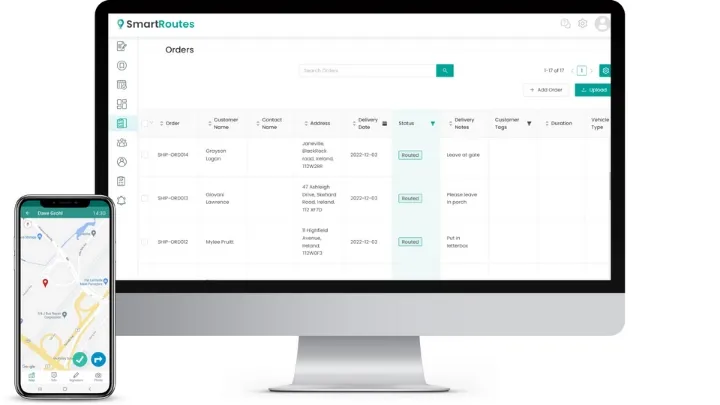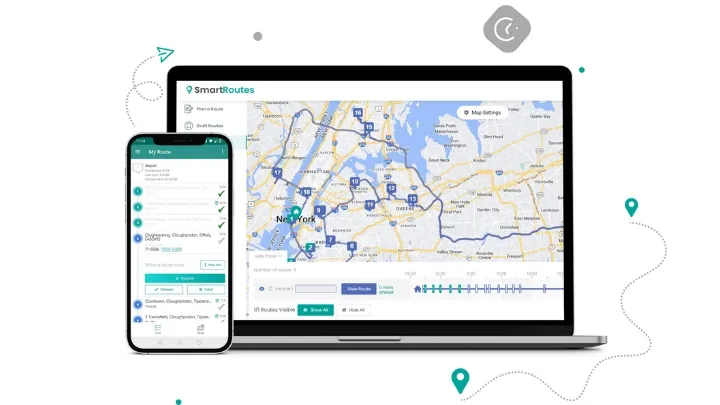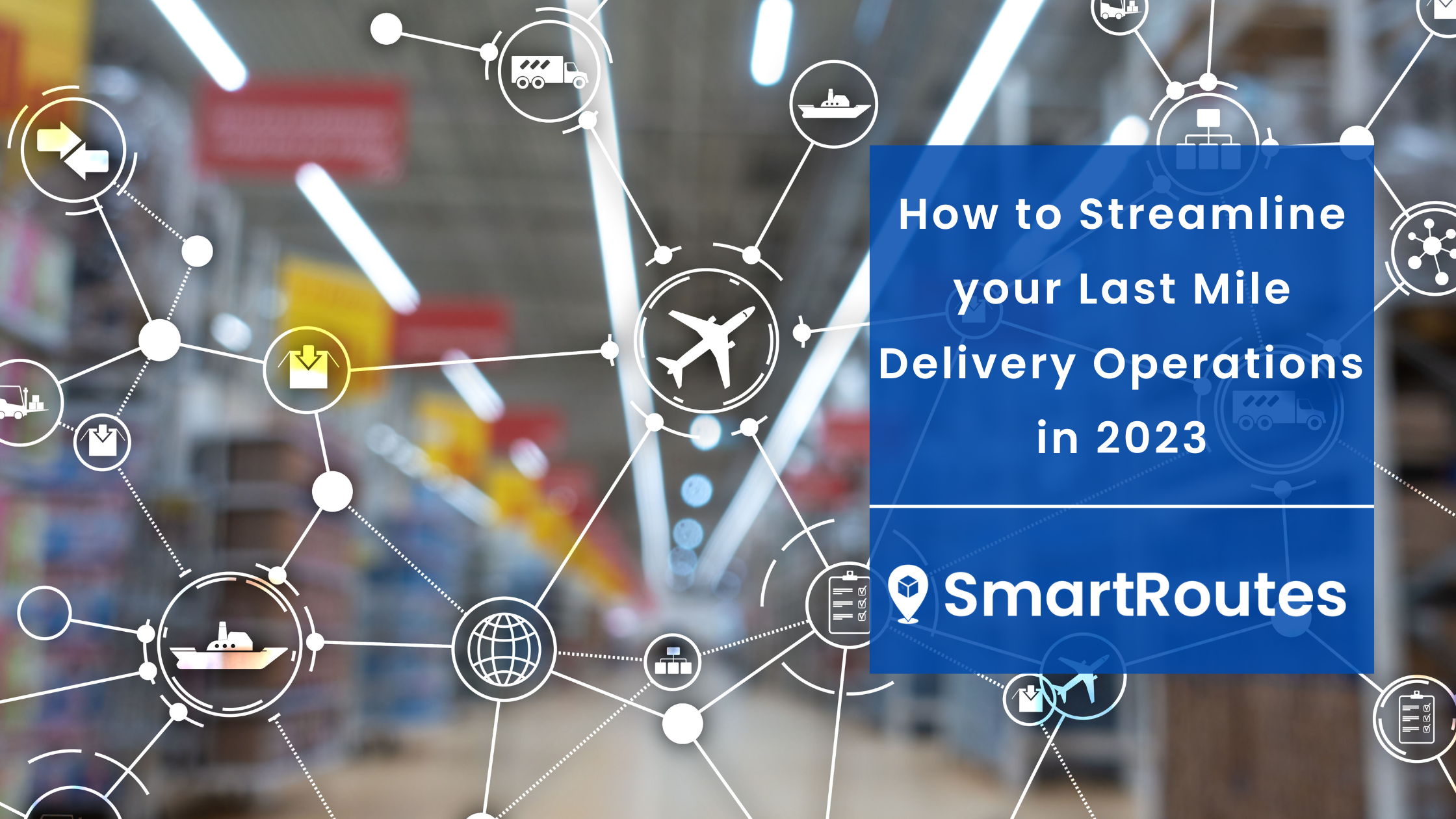On Time Delivery: The Full Guide To The Most Important Delivery Metric
Delivery on time and as promised is critical to the success of any delivery business. So, let’s take a look at what on time delivery is exactly, and what the biggest challenges are in achieving it.

Delivery on time and as promised is critical to the success of any delivery business. So, let’s take a look at what on time delivery is exactly, and what the biggest challenges are in achieving it.
Most importantly, we’ll look at how you can get it just right:
What is On Time Delivery, and Why Does it Matter?
Calculating on time delivery rate
7 top tips on how to improve on time delivery
What are the main causes of failure to deliver on time?
What is On Time Delivery, and Why Does it Matter?
On time delivery, sometimes shortened to the acronym OTD, is the name given to the measurement of the number/percentage of deliveries made at the promised delivery date and time. It is one of the main KPI’s used within the last mile logistics and parcel delivery industry to determine how efficient the supply chain
really is.
While delivering packages undamaged is the main goal of delivery teams, delivering on time is definitely a close second.
As eCommerce and online convenience shopping have increased in recent years, so too have the expectations of customers. So, whether you're a dedicated courier or 3PL delivering in the B2B space, or you're a retailer delivering your own stock, getting your on time delivery rate as close to 100% as possible will be critical to how successful your business will be in the long-term.
The reason it’s so important to get deliveries done according to your own OTD targets are really twofold:
- Your delivery experience and customer retention depends on it.
- Your business's long term success and scalability depends on it
As we’ve mentioned already, happy customers make for a happy account balance for your business. Truth is, people get excited by deliveries, they talk about their deliveries, and although they might not tell their friends about the good delivery experiences, they sure will tell them about the bad ones.
Late delivery is frustrating for a customer and minimizing these late deliveries is the key to good word-of-mouth
But you need to be concerned about the internal impact the on time delivery rate has on your own ability to function too. For every late delivery, every subsequent drop-off on that run is going to take a hit as well.
All of a sudden, your team is inundated with customer queries and complaints and your warehouse becomes a mess.
And if you're constantly fighting fires, you're not going to have time to grow your business the way it deserves.
So, let’s get into the topic a little deeper and look at how to calculate your on time delivery rate, what are the causes of late deliveries and how you can improve your rate.
On Time Delivery Performance Metrics with SmartRoutes
Streamline your entire delivery process, all from one platform

Calculating on time delivery rate
Calculating your on time delivery rate can't be easier.
On time delivery metrics are usually calculated as a percentage of late deliveries as part of the total deliveries completed in a specified timeframe (depending on factors such as the size of the business and parcels volumes, this will usually be on a daily, weekly, or monthly basis) For example:
Bobs’ Courier Express delivered 1,000 packages this week
50 of those packages missed their delivery window
So, Bob’s on time delivery rate is 95%.
Simple!
7 top tips on how to improve on time delivery
Invest in a suitable Order Management System
We start with order management systems, and we do so for a good reason.
If you’re using one that has become obsolete, you need to seriously consider an investment.
And we mean invest!
While it might seem like there’s a never ending list of operational costs, the truth is that nothing will provide a return on investment like a suitable, well-configured order management system.
Warehouse and delivery operations need to be like a well-oiled machine that has every part of it working together and minimizing any errors that can possibly occur. Well-developed systems can have the benefit of automating a lot of the mundane tasks that are prone to human error like route planning, sending customers pre-delivery notifications and importing order details like where exactly a parcel should be dropped-off.
Modern order management systems have the advantage of seamlessly integrating with your current technologies like WooCommerce, Shopify, and What3Words to make everything run as smooth as possible.

Provide full visibility and oversight to your team
Warehouse staff and pickers, drivers, customers, and most importantly;
You!
While it might seem like a simpler solution, keeping employees in the dark about the activities of their colleagues in other roles doesn’t work in the parcel delivery industry.
It actually has a detrimental effect on your on time delivery.
For example, if a customer service member can see exactly where a driver is at any given time, they can provide transparent answers to customers and allow them to make arrangements to take the delivery.
Similarly, if drivers can have full oversight of order details on their route, it can lead to much greater efficiency. If a driver arrives at a big building and doesn't know which door to knock on, they can simply look at the order on their mobile device and if they have access to the customer's order request, they will instantly know where to go.
Utilize customer delivery notifications
So simple, yet so effective in driving your on time delivery to 100% as possible.
Sometimes when things are so obvious, they are easily overlooked and we feel silly once we realize the error we were making. This is the truth for delivery notifications.
If a customer doesn’t know what time you plan to deliver at, they can't make arrangements to accept the delivery.
Simple.
Delivery notifications work by sending the customer an SMS or email with an approximate time of delivery based on the route schedule created by your delivery management system.
That means no extra work for you or your team!
By receiving a quick message with the approximate time, the customer can take the appropriate steps to help make the delivery a successful one, reducing the likely hood of receiving customer complaints.
Whether that means the change their plans, or they give a quick call to make you aware that they have left a garage door open, it helps to make the delivery journey smoother for everyone and improves customer satisfaction!
Optimize delivery routes
Route optimization has been the backbone of the system that we have built at SmartRoutes since the very beginning.
It hasn’t been easy, but building a piece of software that can save businesses up to 33% on the distances traveled on journeys has been one of the biggest ways we’ve helped big fleets to transform their operations.
What modern computational capabilities have brought us is incredible, and to not use it to its fullest extent is a sin in our eyes.
Enough gloating about it though!
Route optimization software is a guaranteed push towards full on time delivery. By ensuring that routes are as efficient as possible, it gives your and your drivers the best possible chance of getting those parcels dropped within the scheduled delivery time window.
Simple really, but if you haven't already, we’d advise you to take a look at some more route optimization guides on our blog.

Motivate and reward delivery drivers
You hear the line trotted out all the time:
“You’re employees are your best asset”
We’ve heard it so many times that it has become a bit cliche.
The reality is though, in a delivery business, it couldn’t be more true! They play the role of driver, ambassador, PR, and a whole lot more. In a lot of businesses, they might just be the only ones interacting with your customers face to face, building rapport, and shouldering the responsibility for the entire reputation of your business.
Let that sink in for a minute!
That’s why we are constantly championing the delivery drivers of this world, and we believe they need to be fairly respected and compensated for the important work they do.
Firstly, and for the reasons we outline above, do not short-change your drivers!
While it can be seen as an entry-level driving job, it shouldn’t be compensated that way. It requires a lot of hard, physical labor, as well as great communication skills. Paying a fair wage to your drivers will reap rewards in terms of both customer and employee retention.
It will also pay to make their lives as easy as possible and to do so, you should invest in them and show them that you care.
Making sure that they have adequate, comfortable uniforms (including comfortable and safe work shoes!) is the minimum, but providing a driver app that includes route navigation, full details on every delivery (address, phone number for customer, notes attached to order by customer etc) will make life much more seamless for them on the road.
Again, by having this tool in place, you can ensure that any queries from customers about deliveries can be fielded by your support staff, minimizing interruptions to the drivers work while behind the wheel!
Use durable packaging labels
Again, this is a simple one, but too easily overlooked.
According to research by ParcelLab and YouGov, in the UK, 9 million people have received damaged parcels at some point.
With more and more people shopping online, that figure doesn't come as a surprise. It should, however, come as a warning to package handlers that are intent on growing hotter businesses.
Avoiding damaged goods should be a primary concern for all delivery businesses. And of course, if your drivers don’t have to spend their time explaining and apologizing to customers at their doorstep, they are much more likely to get to their next delivery on time as well!
There’s no end of providers of durable packaging materials, but it's worth checking out an industry leader like Avery to get an idea of what you could be using.
What are the main causes of failure to deliver on time?
There’s no single reason for late delivery, but it can be a combination of factors that lead to a business.
Lack of delivery planning processes
As the old saying goes; fail to prepare, prepare to fail!
Unfortunately, there are still a lot of delivery operations that do not have a robust delivery process. If there is no system for creating driver manifests and getting their vehicles loaded in the morning with minimal fuss, it can delay your entire delivery operation.
If there is no set route for drivers to follow, they can easily be wasting time following inefficient routes that they think are best.
If loading and return-to-depot times are not staggered, it can create chaos at the warehouse and in the yard.
If you run deliveries, you need to have a process that works, or you'll quickly find your OTD rates spiraling downward.
Poor warehouse & inventory management
Keeping your warehouse or depot organized, clean, and in control goes a long way to getting your delivery operation running smoothly.
It’s also the first place you need to look at if things seem to be going pear-shaped on a regular basis.
The distribution of driver manifests, the allocation of parcels to parts of the store categorized by the area to be delivered to and/or the delivery bay they’re being loaded on will all help to minimize the risk to your on time delivery.
Poor warehouse and inventory will always end in late deliveries.
Under staffing & poor training
We touched on the importance of treating drivers with respect already, but respect needs to be extended to every person in your organization if you’re going to hit your delivery targets.
By keeping warehouse, logistics and support staff motivated, you'll reap the rewards in the delivery of the parcel down the line.
Failure to keep staff happy, secure and feeling safe will ultimately lead to mistakes and an unwillingness to go the extra mile for your business.
External Factors
While the causes of failure above are all at least in some way manageable, sometimes you just can’t control what happens.
Traffic, unexpected issues on the delivery site, problems with delivery vehicles etc.
The list is endless.
The reality is that you have to account for these issues when your run and delivery service and just try to manage them as best you can.
SmartRoutes unifies your delivery operations to maximize on time delivery rates
On time delivery requires that all the moving parts of your delivery business are working in tandem and that everybody is working towards the same agreed objective.
SmartRoutes delivery solution helps to do just that by ensuring that you have one single resource for managing every detail from order management to parcel dispatch and route planning. Our solution is designed to give everyone involved in a delivery business full oversight and the ability to do their job to the very best of their ability.
You can try SmartRoutes for FREE over the next 7 days.
Frequently asked questions
1. What is On-Time Delivery, and Why Is It Important in Logistics?
On-time delivery, in the context of logistics, refers to the ability of a company to deliver products or services to customers within the promised timeframe. It is important because it directly affects customer satisfaction, loyalty, and a company's reputation. Customers rely on timely deliveries to meet their own schedules and expectations, making it a critical aspect of any logistics operation.
2. How Can I Calculate On-Time Delivery Performance for My Business?
To calculate on-time delivery performance, you can start by determining the total number of on-time deliveries (deliveries made within the specified time window) and divide it by the total number of deliveries during a specific time period. This calculation results in a percentage that represents your on-time delivery rate. It's a key performance indicator (KPI) for evaluating the reliability of your delivery process.
3. What Are Some Common Challenges in Achieving On-Time Delivery?
Achieving on-time delivery can be challenging due to various factors. Common challenges include unexpected disruptions, traffic delays, inventory issues, and inaccurate demand forecasting. Addressing these challenges often requires effective supply chain management, real-time tracking, and proactive communication with customers to manage expectations and respond to unforeseen circumstances promptly.
4. What Key Metrics or KPIs Should I Monitor to Improve On-Time Delivery?
Several key performance indicators (KPIs) are essential for monitoring and improving an on time delivery KPI. These include order lead time (the time from order placement to delivery), order fulfillment time (the time to pick, pack, and ship an order), transportation time, and order accuracy. Regularly tracking and analyzing these metrics can help identify areas for improvement and guide your efforts to enhance on-time delivery.
5. What Strategies Can Businesses Implement to Enhance On-Time Delivery?
Businesses can implement various strategies to improve on-time delivery, including route optimization to reduce transit times, demand forecasting to anticipate customer needs, real-time tracking to monitor shipments and address issues proactively, and proactive communication with customers to keep them informed about their deliveries. Utilizing technology and automation can also help streamline logistics operations and increase on-time delivery rates.
6. What Is a Good On-Time Delivery Percentage?
A good on-time delivery percentage typically ranges from 95% to 100%. This range indicates that the majority of deliveries are meeting promised timeframes, which is crucial for maintaining customer satisfaction and trust. However, the ideal percentage may vary depending on industry standards, customer expectations, and specific business goals.
If you liked this blog you may also be interested in:








